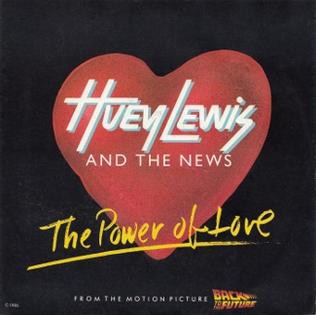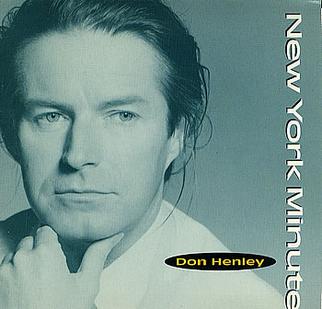 When Madonna released “Into the Groove” in 1985, it wasn’t just another dance track on a film soundtrack — it was a defining moment in the cultural and sonic revolution she spearheaded throughout the 1980s. By then, Madonna was already a rising pop icon with hits like “Holiday,” “Like a Virgin,” and “Material Girl.” But “Into the Groove” felt different. It was rawer, more urgent, more physical. It was a manifesto wrapped in a dance beat, an invitation to lose yourself on the dance floor and find something even more essential in the process — freedom.
When Madonna released “Into the Groove” in 1985, it wasn’t just another dance track on a film soundtrack — it was a defining moment in the cultural and sonic revolution she spearheaded throughout the 1980s. By then, Madonna was already a rising pop icon with hits like “Holiday,” “Like a Virgin,” and “Material Girl.” But “Into the Groove” felt different. It was rawer, more urgent, more physical. It was a manifesto wrapped in a dance beat, an invitation to lose yourself on the dance floor and find something even more essential in the process — freedom.
“Into the Groove” was written for the film Desperately Seeking Susan, in which Madonna starred alongside Rosanna Arquette. Though not originally intended for radio or album release in the United States, the song took on a life of its own. In countries like the UK, it was released as a single and topped the charts. In the US, where it was relegated to the B-side of “Angel,” it became an underground radio hit, dominating clubs, MTV, and pop culture without ever having an official single designation. That only added to its allure — the idea that something this electric was flying under the radar only made it more coveted.
From the very first synth stab, “Into the Groove” commands attention. The beat is insistent but never aggressive, walking a fine line between new wave and dance-pop with precision. Madonna’s vocal delivery is playful and unfiltered — she sounds like she’s smiling as she sings. That’s the key to the song’s charm: it doesn’t lecture or demand; it seduces. The lyrics aren’t complicated, but they strike a universal chord: “Only when I’m dancing can I feel this free.” The statement is simple, but it reverberates with a generation that found liberation not in politics or institutions, but in music, in movement, in moments stolen under disco balls.
The timing of the song’s release was crucial. The mid-1980s were a turning point for pop culture. MTV had made music a visual experience, and Madonna was its reigning queen. Her image — irreverent, rebellious, and unmistakably her own — made her a cultural lightning rod. But “Into the Groove” went beyond image. It was about bodily autonomy, especially for women, at a time when feminism was wrestling with consumerism, sexuality, and self-expression. Madonna didn’t just walk that tightrope; she danced across it in high heels and bangles. “Into the Groove” was her declaration that joy itself could be revolutionary.
Musically, the track was deceptively simple. Produced with Stephen Bray, a longtime collaborator and former bandmate of Madonna’s, the song relies on a cyclical bassline, syncopated handclaps, and minimalist synth patterns that build steadily. It’s not flashy. It doesn’t reach for orchestral flourishes or heavy metal bombast. Instead, it trusts the rhythm — a locked-in groove that mirrors the song’s thematic insistence that motion is a kind of truth. You believe Madonna when she says she’s never felt so good; her voice pulses with conviction, with delight. That authenticity, more than technical perfection, is what made the song a classic.
What’s fascinating is how “Into the Groove” transcended its origins as a soundtrack contribution. It wasn’t part of Madonna’s second album Like a Virgin, yet it feels inseparable from the era. Fans began to associate it with Madonna’s burgeoning control over her career. She was no longer just a pretty face in lace gloves and crucifixes — she was a creative force who knew exactly what she was doing. She could make a B-side into a career-defining moment. That’s power.
Live performances of “Into the Groove” only deepened its legend. During her Who’s That Girl tour in 1987, Madonna elevated the song with choreography and stagecraft that felt like a street party and a Broadway show all at once. Her backup dancers weren’t just accessories; they were co-conspirators in her vision of dance as liberation. And over the decades, Madonna has continued to reimagine the song, infusing it with house beats, tribal rhythms, and modern techno flourishes. Each version reflects not just a reinvention of the track, but a reinvention of Madonna herself. Few artists have the longevity or nerve to remake their past with such boldness, and “Into the Groove” has been her most pliable canvas.
Culturally, the song had a profound ripple effect. It helped define what pop music could be — not just catchy and commercially successful, but personal, political, and deeply embodied. Madonna didn’t just invite listeners to dance; she invited them to reclaim their bodies, their identities, their nights out. For LGBTQ+ audiences in particular, “Into the Groove” became an anthem of joy and release. At a time when the community faced increasing marginalization, especially during the AIDS crisis, Madonna’s music offered an oasis — a place to exist fully and unapologetically.
The legacy of “Into the Groove” also reverberates through other artists who cite it as formative. Whether it’s Britney Spears channeling Madonna’s unabashed sexuality or Lady Gaga invoking her mix of irony and sincerity, the DNA of “Into the Groove” is all over modern pop. Its minimalist production, celebratory message, and kinetic energy remain templates for how to make a song both immediate and enduring. Madonna proved you don’t need a grand statement when you have a great beat and an honest voice. Sometimes that’s all it takes to change everything.
Despite its popularity, the song has always felt a little elusive, partly because of its strange release history. In the U.S., it didn’t chart on the Billboard Hot 100 due to its B-side status, a quirk of chart rules at the time. But that didn’t stop it from becoming one of the most recognizable songs of the decade. It was everywhere — in dance clubs, on mix tapes, on MTV, in bedrooms and backseats and walkmans. People didn’t need a chart position to tell them what they already knew. “Into the Groove” was a sensation.
There’s also a timeless quality to the song that helps explain its continued relevance. Unlike some 1980s hits that are tethered to their moment, “Into the Groove” exists slightly outside of time. It doesn’t rely on dated slang or gimmicky production. It feels fresh every time it’s played. That might be because the emotions it channels — longing, joy, connection — are always contemporary. Or maybe it’s because Madonna herself refuses to become a relic. She’s always pushing forward, and this song — her first true dance floor dominator — is her eternal engine.
Even the way the song ends is telling. It doesn’t fade out gently or conclude with a dramatic finale. It loops until it just stops, like a dancer collapsing from ecstasy or a DJ pulling the plug at 3 a.m. That unfinished feeling is part of its power. It leaves you wanting more — one more beat, one more night, one more spin under colored lights. That’s the essence of pop: to make you feel alive for a few minutes, then leave you chasing that feeling forever.
“Into the Groove” isn’t just a song. It’s an ethos. It’s a world unto itself — pulsing, sweating, shimmering with possibility. It invites you to lose control in order to find yourself. And that’s not just dance music; that’s magic.


